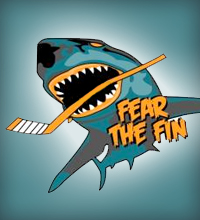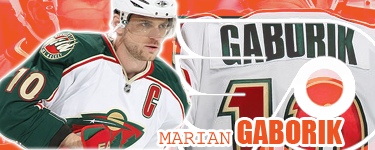Post by C00kies - Retired Kings GM on Jun 1, 2012 23:22:35 GMT -5
Figured we'd post stuff about NHL 13 and keep it in this thread.
NHL 13 already sounds like its skating in the right direction with the new True Performance Skating system and EA Sports IQ, but if the series wants to be in the sports game of the year conversation one of the areas needing a major overhaul is the Be A GM mode. We sat down with producer Andy Agostini to discuss the new connected franchise mode and how EA Canada plans on making the general manager AI perform more like Red Wings mastermind Ken Holland and less like former New York Islanders trainwreck/current TV commentator Mike Milbury.
Here's what we know so far about NHL 13 revamped GM mode.
GM Connected
1. EA retooled its most popular mode to include a multi-user dynasty with up to 30 NHL teams being run by 30 human general managers.
2. This new GM Connected mode features a full 82-game schedule and can run for up to 25 years.
3. EA chose against including fantasy draft because it didn't want the barrier of entry to be a tedious 45-round draft. If you want to mix up the teams so no one is forced to play with the Edmonton Oilers (zing!) you can randomize the rosters when starting the league.
4. Users can play GM Connected in several ways, including a solo league against the CPU AI, standard versus, co-op, six-on-six online team play, taking the role of a general manager, or as a coach who handles line changes and team strategy.
5. Connected GM is elastic, meaning one team could be controlled by a GM, while another is run by a hands-on player, and another is run by a coach.
6. In six-on-six online team play leagues, you can have up to 25 users per each team. This allows teams to have a ringer take the role of a regular when they're short a body.
7. Free agency includes both unrestricted and restricted free agents, and it's handled via seven bidding periods. The highest bidders win the services of the player, and if you strike out you have several more rounds to find an adequate replacement.
8. Much to the dismay of hardcore franchise guys, the NHL Entry Draft is automated. You can still scout players during the season and build a priority list of prospects. Once the draft starts, however, the CPU will use your priority list to make selections for your team.
9. While running your team you have full access to the entire list of players in the organization, including the AHL, CHL, and foreign league prospects.
10. The commissioner controls how quickly the league advances. You can opt for either three-day, one-week, or two-week periods.
11. A news panel in the menu screen keeps you abreast of all league happenings.
12. An integrated messaging system informs you of waivers, trades, and league join requests. You can also send messages to the commissioner, the entire league, or team members.
13. EA built in systems to deal with grieving and cheating. The commissioner has the power to kick out users at any time.
14. If a commissioner goes missing, other general managers can vote him out to keep the league moving along.
15. EA plans to release a mobile app that allows players to stay engaged with their leagues when they're away from their consoles. From the app, players can juggle team rosters, scour the waiver wire, propose trades, and read about league happenings.
16. If you want to keep your GM experience offline, you still have that option. Doing so will allow you to make your draft selections like in past NHL games.
GM BRAIN
17. NHL 12 received a lot of criticism for its poor GM AI. Teams would stash veterans in the minors, propose ridiculous trades, and let top prospects leak into free agency. This year EA is completely rebuilding the system.
18. With the GM Brain AI working as the backbone for all decisions, general managers now look at their teams just like their real-world counterparts, evaluating the current and future talent and making decisions based on what will make their teams better now and a few years down the road.
19. The GM Brain now catalogs players based on where they fit into the entire NHL, not just how they fit on their team. This means that while the Wild may play Devin Setoguchi on the first line because the offensively challenged team is short on scoring talent, the GM recognizes that in reality he's more of a second line player. This places all the players on a roster in a pecking order and help inform the GM of the team weaknesses and surpluses.
20. Because teams know what they have on their roster relative to the rest of the league, they are smarter about making free agency signings. Last year when a team needed a fifth goalie to be a backup in the minors, it would sign an NHL-level talent to a one-way contract and then immediately try to squeeze him through waivers. This year teams will sign a player of the appropriate skill level if all they need is a body for their AHL affiliate.
21. When deciding what moves his team should make for the upcoming season, first the GM Brain determines if his team is a championship-level team, a contender, a hopeful, or in rebuilding mode. This evaluation helps set the types of trades a team is willing to engage. If a team is on the cusp of a championship, it may trade off some prospects to get a veteran who fills a weakness. If a team is in full rebuilding mode, it will be much more likely to trade off players at the tail end of their prime in exchange for prospects or draft picks.
22. In NHL 12 players were primarily valued by three traits: offense, defense, and athleticism. After talking with the NHL's central scouting service about how it operates, EA has changed this in NHL 13. Now GMs evaluate key six areas: shooting, skating, puck skills, physicality, hockey sense, and defense.
23. Once a team proposes a trade deal, a few days will have to pass before they will rescind the offer. This should allow you to come back to deals instead of being forced to take them immediately when they are proposed before the GM AI changed its mind and rescinded the offer.
24. EA has reworked all the feedback a user receives when trying to make a trade. Now teams give you a better sense of what they are looking for and how far off your proposal is.
25. GM Brains also have the ability to project their rosters up to five years out. This helps them determine what talent is coming up so it knows when it's smart to either trade a veteran during the deadline to make or let him leave via free agency to make room for a prospect.
26. Though some outlets (including us) criticized NHL 12 for having too many players rated 80 and above, EA is content with its current ratings system and believes that by surfacing the six player traits instead of three it will be easier for players and AI GMs to better understand a player's true value.
27. When making draft picks, GM Brains will draft the best players available until it gets into the later rounds. Then it will start addressing positions of need.
28. The trade engine is now much more granular than it was in the past. If you want to tell teams you are looking for a first-line forward between the ages of 27 and 30, you can do that. The GM Brains also have a much better idea of what players they are willing to trade.
29. In past NHL games, when a player went down the AI would make wholesale line changes instead of just plugging a scratched player into the hole. Now the AI is smart enough to make individual moves without completely revamping the entire lineup. It will also make player valuations to determine the best fit when a player goes down. A right winger may switch to center if the next center in the minor league is significantly worse.
30. The AI is also smarter about using enforcers. In previous games their high strength ratings made them likely candidates to be automatically placed on the penalty kill. Know the AI knows that these players are specialists and will play them on (and keep them off) appropriate lines.
NHL 13 already sounds like its skating in the right direction with the new True Performance Skating system and EA Sports IQ, but if the series wants to be in the sports game of the year conversation one of the areas needing a major overhaul is the Be A GM mode. We sat down with producer Andy Agostini to discuss the new connected franchise mode and how EA Canada plans on making the general manager AI perform more like Red Wings mastermind Ken Holland and less like former New York Islanders trainwreck/current TV commentator Mike Milbury.
Here's what we know so far about NHL 13 revamped GM mode.
GM Connected
1. EA retooled its most popular mode to include a multi-user dynasty with up to 30 NHL teams being run by 30 human general managers.
2. This new GM Connected mode features a full 82-game schedule and can run for up to 25 years.
3. EA chose against including fantasy draft because it didn't want the barrier of entry to be a tedious 45-round draft. If you want to mix up the teams so no one is forced to play with the Edmonton Oilers (zing!) you can randomize the rosters when starting the league.
4. Users can play GM Connected in several ways, including a solo league against the CPU AI, standard versus, co-op, six-on-six online team play, taking the role of a general manager, or as a coach who handles line changes and team strategy.
5. Connected GM is elastic, meaning one team could be controlled by a GM, while another is run by a hands-on player, and another is run by a coach.
6. In six-on-six online team play leagues, you can have up to 25 users per each team. This allows teams to have a ringer take the role of a regular when they're short a body.
7. Free agency includes both unrestricted and restricted free agents, and it's handled via seven bidding periods. The highest bidders win the services of the player, and if you strike out you have several more rounds to find an adequate replacement.
8. Much to the dismay of hardcore franchise guys, the NHL Entry Draft is automated. You can still scout players during the season and build a priority list of prospects. Once the draft starts, however, the CPU will use your priority list to make selections for your team.
9. While running your team you have full access to the entire list of players in the organization, including the AHL, CHL, and foreign league prospects.
10. The commissioner controls how quickly the league advances. You can opt for either three-day, one-week, or two-week periods.
11. A news panel in the menu screen keeps you abreast of all league happenings.
12. An integrated messaging system informs you of waivers, trades, and league join requests. You can also send messages to the commissioner, the entire league, or team members.
13. EA built in systems to deal with grieving and cheating. The commissioner has the power to kick out users at any time.
14. If a commissioner goes missing, other general managers can vote him out to keep the league moving along.
15. EA plans to release a mobile app that allows players to stay engaged with their leagues when they're away from their consoles. From the app, players can juggle team rosters, scour the waiver wire, propose trades, and read about league happenings.
16. If you want to keep your GM experience offline, you still have that option. Doing so will allow you to make your draft selections like in past NHL games.
GM BRAIN
17. NHL 12 received a lot of criticism for its poor GM AI. Teams would stash veterans in the minors, propose ridiculous trades, and let top prospects leak into free agency. This year EA is completely rebuilding the system.
18. With the GM Brain AI working as the backbone for all decisions, general managers now look at their teams just like their real-world counterparts, evaluating the current and future talent and making decisions based on what will make their teams better now and a few years down the road.
19. The GM Brain now catalogs players based on where they fit into the entire NHL, not just how they fit on their team. This means that while the Wild may play Devin Setoguchi on the first line because the offensively challenged team is short on scoring talent, the GM recognizes that in reality he's more of a second line player. This places all the players on a roster in a pecking order and help inform the GM of the team weaknesses and surpluses.
20. Because teams know what they have on their roster relative to the rest of the league, they are smarter about making free agency signings. Last year when a team needed a fifth goalie to be a backup in the minors, it would sign an NHL-level talent to a one-way contract and then immediately try to squeeze him through waivers. This year teams will sign a player of the appropriate skill level if all they need is a body for their AHL affiliate.
21. When deciding what moves his team should make for the upcoming season, first the GM Brain determines if his team is a championship-level team, a contender, a hopeful, or in rebuilding mode. This evaluation helps set the types of trades a team is willing to engage. If a team is on the cusp of a championship, it may trade off some prospects to get a veteran who fills a weakness. If a team is in full rebuilding mode, it will be much more likely to trade off players at the tail end of their prime in exchange for prospects or draft picks.
22. In NHL 12 players were primarily valued by three traits: offense, defense, and athleticism. After talking with the NHL's central scouting service about how it operates, EA has changed this in NHL 13. Now GMs evaluate key six areas: shooting, skating, puck skills, physicality, hockey sense, and defense.
23. Once a team proposes a trade deal, a few days will have to pass before they will rescind the offer. This should allow you to come back to deals instead of being forced to take them immediately when they are proposed before the GM AI changed its mind and rescinded the offer.
24. EA has reworked all the feedback a user receives when trying to make a trade. Now teams give you a better sense of what they are looking for and how far off your proposal is.
25. GM Brains also have the ability to project their rosters up to five years out. This helps them determine what talent is coming up so it knows when it's smart to either trade a veteran during the deadline to make or let him leave via free agency to make room for a prospect.
26. Though some outlets (including us) criticized NHL 12 for having too many players rated 80 and above, EA is content with its current ratings system and believes that by surfacing the six player traits instead of three it will be easier for players and AI GMs to better understand a player's true value.
27. When making draft picks, GM Brains will draft the best players available until it gets into the later rounds. Then it will start addressing positions of need.
28. The trade engine is now much more granular than it was in the past. If you want to tell teams you are looking for a first-line forward between the ages of 27 and 30, you can do that. The GM Brains also have a much better idea of what players they are willing to trade.
29. In past NHL games, when a player went down the AI would make wholesale line changes instead of just plugging a scratched player into the hole. Now the AI is smart enough to make individual moves without completely revamping the entire lineup. It will also make player valuations to determine the best fit when a player goes down. A right winger may switch to center if the next center in the minor league is significantly worse.
30. The AI is also smarter about using enforcers. In previous games their high strength ratings made them likely candidates to be automatically placed on the penalty kill. Know the AI knows that these players are specialists and will play them on (and keep them off) appropriate lines.










































